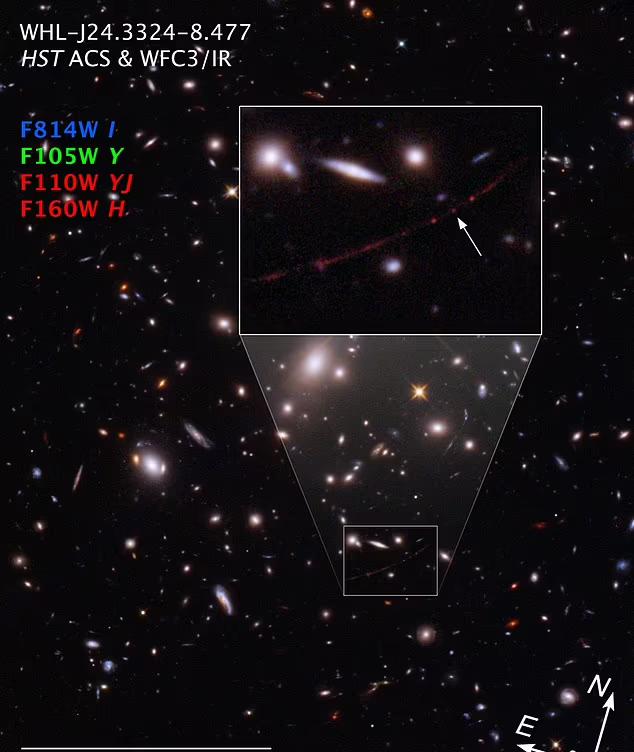According to a paper published in the latest issue of Nature, NASA's Hubble Space Telescope detected a giant star dating back 12.9 billion years, the oldest star astronomers have ever seen. It is reported that the light of this star was produced at the time of the universe at 900 million years, and it is millions of times brighter than that of the Sun.
The newly discovered star, named Emerald, or "morning star" in Old English, is reportedly nearly 4 billion years above the record of previous oldest stars. Based on data collected by the Hubble Space Telescope, this observation is a huge leap in time.

Between the ancient star Earendel and Earth, there is a galaxy cluster that distorts the structure of space, amplifying Earendel's light in a "gravitational lensing" manner, allowing the team to detect it.
A team at the Max Planck Institute in Germany was able to detect the very faint light emitted by this distant star because it has a galaxy cluster between it and Earth that distorts the structure of space, creating a huge natural magnifying glass for the celestial body behind it, distorting and greatly amplifying the light from the distant object behind it.
Lead author Brian Welch, a phD student at Johns Hopkins University in Baltimore, said the star was magnified by gravitational lensing and twisted into a long crescent shape, which led the team to name it "The Arc of Sunrise."
One of the authors, Dr. Selma de Mink of the Max Planck Institute for Astrophysics, said these stars are basically our "stellar ancestors" and that we are made up of the elements they once produced.
The star Erendel is magnified by gravitational lensing and twisted into a long crescent shape, hence the team's name of it "The Arc of Sunrise."
This claim is based on the theory that when a massive star reaches the end of its life, it fuses heavier and heavier elements until it explodes, sending this material into the universe, forming a "nursery" of stars and nebulae. In these nebulae, gas and dust form together under the influence of gravity, eventually forming a new star, planet, and everything on the planet.
Co-author Dr. Guillaume Mahler of Durham University said there may be no star that formed earlier than Earendel, which is so young than the previous 9 billion-year record that he couldn't believe it at first.
Earendel is more than 50 times more massive than the Sun, and although it first burned 12.9 billion years ago, its rays of light have only just reached Earth.
Hubble Space Telescope.
Little is known about Earendel at the moment, but the team hopes to use NASA's recently launched James Webb Space Telescope (JWST) to learn more, including its composition.
Brian Welch said that studying Erendel would be a window into the cosmic age that we're not familiar with, and it's like we've been reading a very interesting book, but we started with the second chapter, and now we'll have the opportunity to see how it all began.
Dr. Mink said the most exciting thing is that some of the black holes recently detected by gravitational waves are remnants of stars from that year, and he hopes that Erendel and similar discoveries in the future will help us learn more about the origin of these black holes.
Text/Nandu reporter Chen Lin